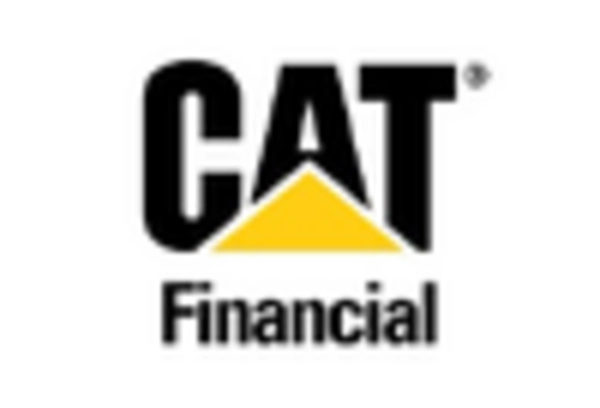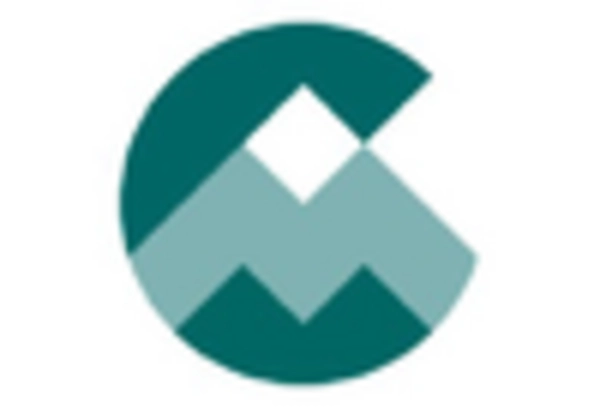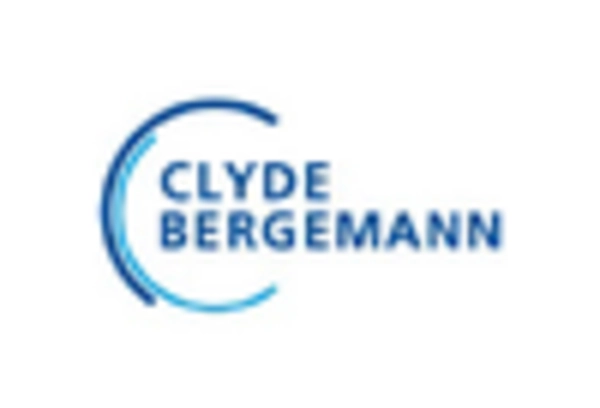Increasing Industrial Energy Consumption
The ORC Waste Heat To Power Market is experiencing a surge in demand due to the rising energy consumption across various industrial sectors. Industries such as manufacturing, oil and gas, and chemical processing are increasingly seeking efficient energy solutions to manage their operational costs. According to recent data, industrial energy consumption is projected to grow by approximately 2.5% annually, which underscores the necessity for innovative technologies like Organic Rankine Cycle (ORC) systems. These systems enable industries to convert waste heat into usable power, thereby enhancing energy efficiency and reducing reliance on traditional energy sources. As industries strive to meet sustainability goals, the ORC Waste Heat To Power Market is likely to benefit from this trend, as companies look to optimize their energy usage and minimize waste.
Rising Energy Prices and Economic Pressures
The ORC Waste Heat To Power Market is also influenced by the rising energy prices and economic pressures faced by industries. As energy costs continue to escalate, companies are increasingly motivated to seek alternative energy solutions that can mitigate these expenses. ORC systems provide a viable option for industries to harness waste heat and convert it into electricity, thereby reducing their dependence on external energy sources. The potential for significant cost savings is driving interest in the ORC Waste Heat To Power Market, as businesses look for ways to enhance their energy resilience. This trend suggests that the market will likely expand as industries prioritize energy efficiency and cost reduction in their operational frameworks.
Growing Awareness of Sustainability Practices
The ORC Waste Heat To Power Market is benefiting from an increasing awareness of sustainability practices among businesses and consumers. As organizations strive to enhance their corporate social responsibility (CSR) initiatives, there is a growing emphasis on reducing carbon footprints and improving energy efficiency. This shift in mindset is leading to greater investments in technologies that facilitate waste heat recovery, such as ORC systems. Companies are recognizing that adopting sustainable practices not only contributes to environmental goals but also offers economic advantages through reduced energy costs. The heightened focus on sustainability is likely to propel the ORC Waste Heat To Power Market forward, as more businesses seek to integrate waste heat recovery into their operational strategies.
Regulatory Frameworks and Environmental Policies
The ORC Waste Heat To Power Market is significantly influenced by stringent regulatory frameworks and environmental policies aimed at reducing greenhouse gas emissions. Governments worldwide are implementing regulations that encourage the adoption of cleaner technologies, including waste heat recovery systems. For instance, policies that mandate emissions reductions are prompting industries to invest in ORC systems, which can effectively convert waste heat into electricity. The market is expected to grow as companies seek compliance with these regulations while also aiming to enhance their sustainability profiles. The increasing focus on environmental stewardship is likely to drive investments in the ORC Waste Heat To Power Market, as businesses recognize the dual benefits of regulatory compliance and energy cost savings.
Technological Innovations in Waste Heat Recovery
Technological advancements play a pivotal role in shaping the ORC Waste Heat To Power Market. Innovations in ORC technology, such as improved working fluids and enhanced heat exchangers, are making waste heat recovery systems more efficient and cost-effective. Recent developments indicate that the efficiency of ORC systems has improved by up to 15% over the past few years, making them more attractive for industrial applications. As industries seek to maximize energy recovery from waste heat, the demand for advanced ORC systems is likely to rise. This trend suggests that the ORC Waste Heat To Power Market will continue to evolve, driven by the need for more efficient and reliable waste heat recovery solutions.


















Leave a Comment